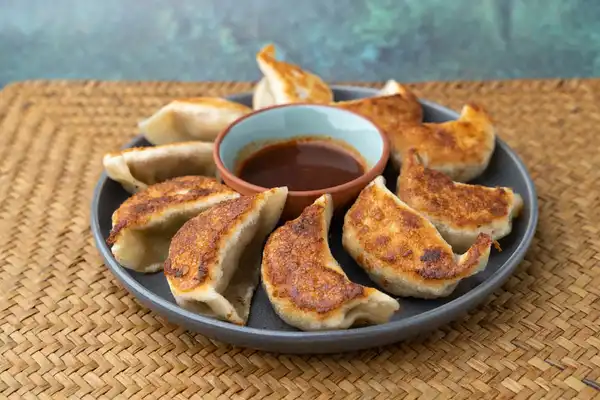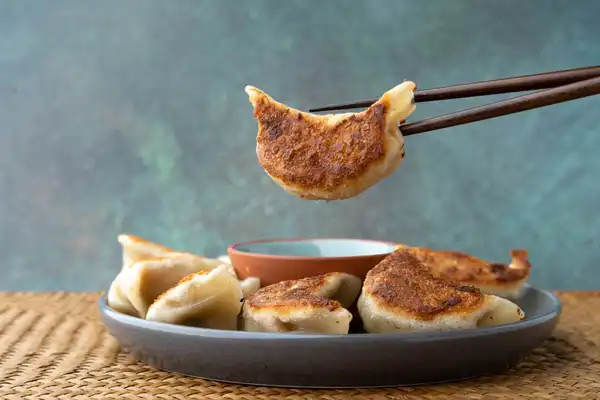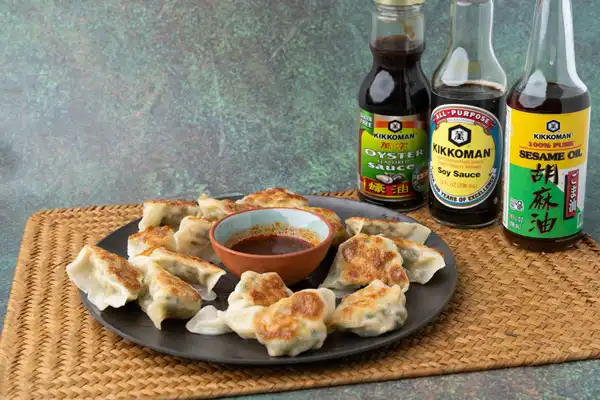The legend of potstickers!
The word "potsticker" comes from the Chinese word "wotip (鍋貼)", which literally means "pot stick". Generally, wotip refers to pan fried dumplings, and this is just one of the thousands of varieties of dumplings found in cuisines all across the world. Even just in Chinese cuisine, you'll find dumplings with savory or sweet fillings, prepared in all sorts of methods like baking, frying, or steaming.
No one agrees on the exact origin of Chinese potstickers, but by one account, these came about when a chef of the Imperial Court accidentally left dumplings cooking in a wok, burning the bottom and claiming them as his own special creation.
Nowadays, potstickers are enjoyed everywhere, on purpose, for their crispy skin and scrumptious fillings served with a perfectly paired dipping sauce.
Thank you, Kikkoman!
This recipe is brought to you in part by Kikkoman. My dad has been using Kikkoman flavors throughout his 50-year career as a chef, and it's a privilege to get to partner with them on such an iconic recipe, Potstickers!
- Kikkoman products are a major flavor enhancer and bring out the “umami” taste, and helps balance and round out flavors
- Kikkoman® Less Sodium Soy Sauce is perfect for home cooks who are looking to cut down on their sodium levels, without sacrificing flavor
- Kikkoman offers wide range of Gluten-Free Asian sauces, including Gluten-Free Oyster Sauce and Gluten-Free Hoisin Sauce
- The KikkomanUSA.com Chinese site offers easy Asian recipes that home cooks can enjoy any night of the week
You can learn more about Kikkoman and follow them on social media here:
- Website: https://www.KikkomanUSA.com
- Facebook: https://www.facebook.com/KikkomanChineseUSA (Kikkoman 萬字在美)
- Instagram: https://www.instagram.com/kikkomanusa_chinese/ (Kikkoman 萬字在美)
Check out a quick story summary of our recipe!



